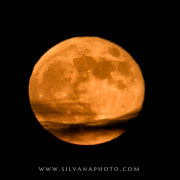How to: Photograph a Solar Eclipse
We have an annular eclipse coming up as well as the “North American” eclipse in April 2024. The following how-to applies to any solar eclipse, not just the ones noted. It also applies to anytime you wish to photograph the Sun. The Sun is a wonderful object to photograph, eclipse or not.

Safety. Safety. Safety
Did I say safety? This should be the most important aspect of photographing the Sun. Do not be nonchalant about eye protection and camera protection. The damage will be permanent. Photographing the Sun without a filter will destroy the camera sensor. Looking at the Sun without eye protection will damage your eyes. It can cause blindness.
Use eye protection that is rated with ISO 12312-2 standard. This is a worldwide specific standard that denotes they are solar filters and protect your eyes. Only specific eclipse glasses with this standard should be used. Here’s an example.
Use a solar filter for your camera. DO NOT use a drop in filter or any kind of clip in filter. The lens will magnify the intensity of the Sun before it even hits the filter. The filter should be placed on the end of the lens. If a telescope solar filter is used, put a piece of gaffer tape around the filter where it lies against the lens to prevent any gaps or potential of anything removing the filter. I find the glass filters are the best. There are mylar film types but these can become dangerous if the coating is creased or cut.
Below, a Hoya screw in solar filter.

Below, a telescope solar filter. This can be used on a telephoto lens as well. Be sure to secure it with gaffer tape.

Steps
Use live view to focus and view the Sun. Avoid using the viewfinder so you can further protect your eyes.
Use a super telephoto lens. If the Sun is low enough on the horizon you can incorporate an interesting foreground object and put the lens compression to work which will give you a super large Sun, like the Moon rise shot below, when the eclipse is reaching or has reached totality. The greater distance from the foreground object, the large the Sun/Moon appears. Use an app like PlanIt! or PhotoPills to help plan the shot.

Use a tripod. A shutter release or shutter delay is helpful to prevent camera shake. With high power telephoto lenses, the slightest movement is magnified.
If you have a tracker, it is a perfect tool to use to track our closest star. Trackers eliminate the constant adjustment needed since the Sun moves so fast and quickly goes out of the frame. I will be using my Benro Polaris for the upcoming eclipses.
NOTE: Focus on the Sun after you place the filter on the camera. Yes, sounds like common sense but I’ve seen people try to point the camera and adjust focus before the filter is on out of sheer habit.
Settings
- Use manual mode
- Set your focus to manual.
- Use vibration reduction.
- ISO 100
- Set the aperture at f/5.6 to f/8
- Shutter speed ~ 1/320 second
- If you are experiencing camera shake, increase the ISO and shutter speed.
Watch your exposure and adjust your settings accordingly during the duration of the eclipse.
Check the times for the start of the eclipse and plan on being setup to shoot at least 30 minutes beforehand.
Below, from the 2017 Annular Eclipse.

An eclipse can be photographed even with substantial clouds. Below, an eclipse from 2021.

Experiencing and photographing an eclipse, be it lunar or solar, is a magical experience.
© Silvana Della Camera
To learn about upcoming workshops and tips on photography, consider subscribing to my website.
Taking photos and want to make them more compelling?
Art isn’t just for walls. Art is also to hold in one’s hands.

 Silvana Della Camera
Silvana Della Camera


 Silvana Della Camera
Silvana Della Camera


 Silvana Della Camera
Silvana Della Camera Silvana Della Camera
Silvana Della Camera
Leave a Reply
Want to join the discussion?Feel free to contribute!